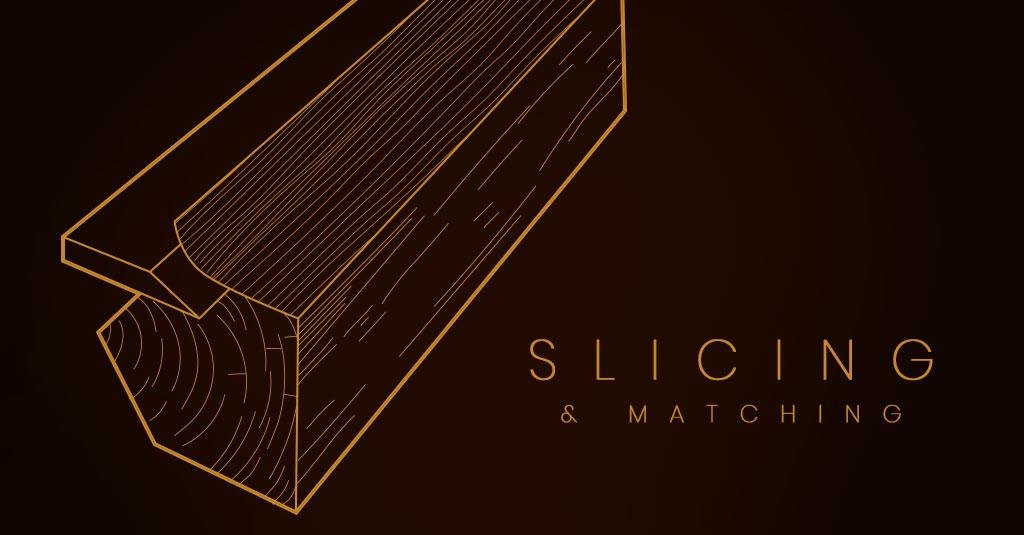
Wood veneer offers an aesthetic, affordable solution for interior wallcoverings. Jacaranda’s extensive selection of species means that you can customize your look using your favorite wood, whether that’s conventional oak, maple or walnut or something a little more exotic such as Brazilian rosewood or teak. Veneers are made by making extremely thin slices in logs, which can not only maximize the yield but can also create diverse looks and textures.
Quite a lot goes into choosing wood for veneer. The veneer backing is graded from one to four, with one being the highest-quality material. Veneer facing, the wood you’ll see, is graded from letters AA to A to B with AA being the highest-quality appearances. Veneers are not graded according to how the veneer has been manufactured but rather the natural characteristics of the wood. AA veneer has minimal color variations and few pin knots. A also has minimal color variations but slightly more pin knots. B grade veneer has more pin knots and may have more color variations than A or AA grade veneer.
Veneer Cuts
The veneer slicing method plays a major role in the finished veneer product. There are four distinct slicing methods for crafting veneer:
Rotary veneer
The log is turned in a circular motion against a knife, peeling off a continuous thin sheet of wood veneer (like unrolling wrapping paper). It is the most economical method of producing veneer, resulting in the highest yield. The grain is inconsistent with swirly pattern, and the leaves are difficult to match.
Plain Sliced
A grain figure resulting from slicing or sawing across a half of a log. This results in the oval or loop grain effect (aka cathedral pattern) in the center of the flitch with a straighter grain along the edge.
Quarter Cut
The slicing is made perpendicular to the annual growth rings of the tree. This creates a straight grain appearance. The quarter slicing of oak can result in the appearance of flake. In some species a ribbon effect.
Rift Cut
Produced by cutting at a slight angle to the radial to produce a straight grain appearance without the excessive ray flake. Rift cut veneer can easily be sequenced and matched.
The Veneer Matching Method
Matching veneers refers to the way the flitches are matched and applied. Most veneers are book matched or slip matched. In a book matched veneer, the flitches are placed side by side to create an appearance similar to open book pages. Slip matched veneers create a consistent appearance especially in species that are quarter cut or rift cut. The right veneer matching method can make your natural wood veneer wallcovering really stand out.
Jacaranda
Jacaranda offers a diverse selection of real wood veneers with appealing patterns and matching options. Our veneers are sliced wafer-thin and applied to flexible backing so that they can be applied to curved or contoured walls or even corners. Each veneer uses the highest quality wood and is finished with a durable urethane coating to provide lasting impact-resistance. Our extensive selection of finishes, stains and custom colors adds further customization options. We use environmentally friendly techniques to protect future supplies. Contact our team today to learn more about Jacaranda’s family of products or to schedule an appointment with our experts.


